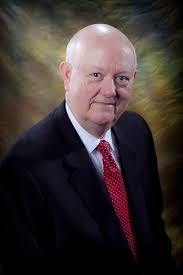Paul did not have long hair while at Corinth. It is true that he took a vow, and during the time of the vow he did not cut his hair (Acts18:18). But in the context of 1 Corinthians 11, long hair is hair that has been allowed to grow; it is hair that has not been cut. Paul must have been in the practice of regularly cutting his hair, or else his abstention from cutting it for a period of time would not, have been worthy of mention.
To View the Entire Article, Click Here
To Download the Article Directly to Your Computer, Click Here
To View the Outline, Click Here
To View the PowerPoint, Click Here
By Daniel L. Seagraves
Objection: Paul had long hair at Cotinth. Answer; There is no doubt that I Corinthians 11 means that it is a shame for a man to have long hair. Verse 14 says, “If a man have long hair, it is a shame unto him.”
Paul did not have long hair while at Corinth. It is true that he took a vow, and during the time of the vow he did not cut his hair (Acts18:18). But in the context of 1 Corinthians 11, long hair is hair that has been allowed to grow; it is hair that has not been cut. Paul must have been in the practice of regularly cutting his hair, or else his abstention from cutting it for a period of time would not, have been worthy of mention. What Paul did was unusual, out of the ordinary. He was in the regular practice of having his hair cut, and he did not allow it to grow as women did.
- Objection: Part of I Corinthians 11 may not be Paul’s words but the quotation of a letter from the Corinthians.3
Answer: This objection is an awkward attempt to ex-plain away the clear meaning of the passage. No serious scholar has adopted this view. It is dangerous to categorize a portion of the eternal Word of God as uninspired opinions of fallible men, especially in order to avoid the clear teaching of that passage.
A number of the objections are offered in an attempt to argue that part of I Corinthians 11 is not valid because it supposedly contradicts the rest of Scripture. Let us ex-amine these objections individually.
- Objection: Nothing else in the Bible indicates that a man should not cover his head while praying or prophesying. To the contrary, the high priest in the Old Testament was to cover his head as he ministered. (See Leviticus 8:9, 13; 10:6; 21:10)4
Answer: We have already seen that the covering mentioned in I Corinthians 11 is long hair itself, not a covering of cloth. Nevertheless, let us examine the scriptural references given.
First, we will look at Leviticus 21:10 in context: “And he that is the high priest among his brethren, upon whose head the anointing oil was poured, and that is consecrated to put on the garments, shall not uncover his head, nor rend his clothes; neither shall he go in to any dead body, nor defile himself for his father, or for his mother; neither shall he go out of the sanctuary, nor profane the sanctuary of his God; for the crown of the anointing oil of his God is upon him: I am the LORD. And he shall take a wife in her virginity. A widow, or a divorced woman, or profane, or an harlot, these shall he not take: but he shall take a virgin of his own people to wife” (Leviticus 21:10-14).
This passage deals specifically with the requirements God had for the high priest. It does not speak to the issue of what was proper for the vast majority of Hebrew men. God had special expectations and demands of those in the priesthood. We may not know all the reasons for His requirements, but it is sufficient to know that God had a purpose. It would be a mistake, however, to say that what was required of the high priest was the norm. If this passage taught that the high priest should not uncover his head when he ministered, it would still have no bearing on the issue at hand, that is, whether a New Testament Christian male should pray and prophesy with an uncovered head.
To View the Entire Article, Click Here
To Download the Article Directly to Your Computer, Click Here



